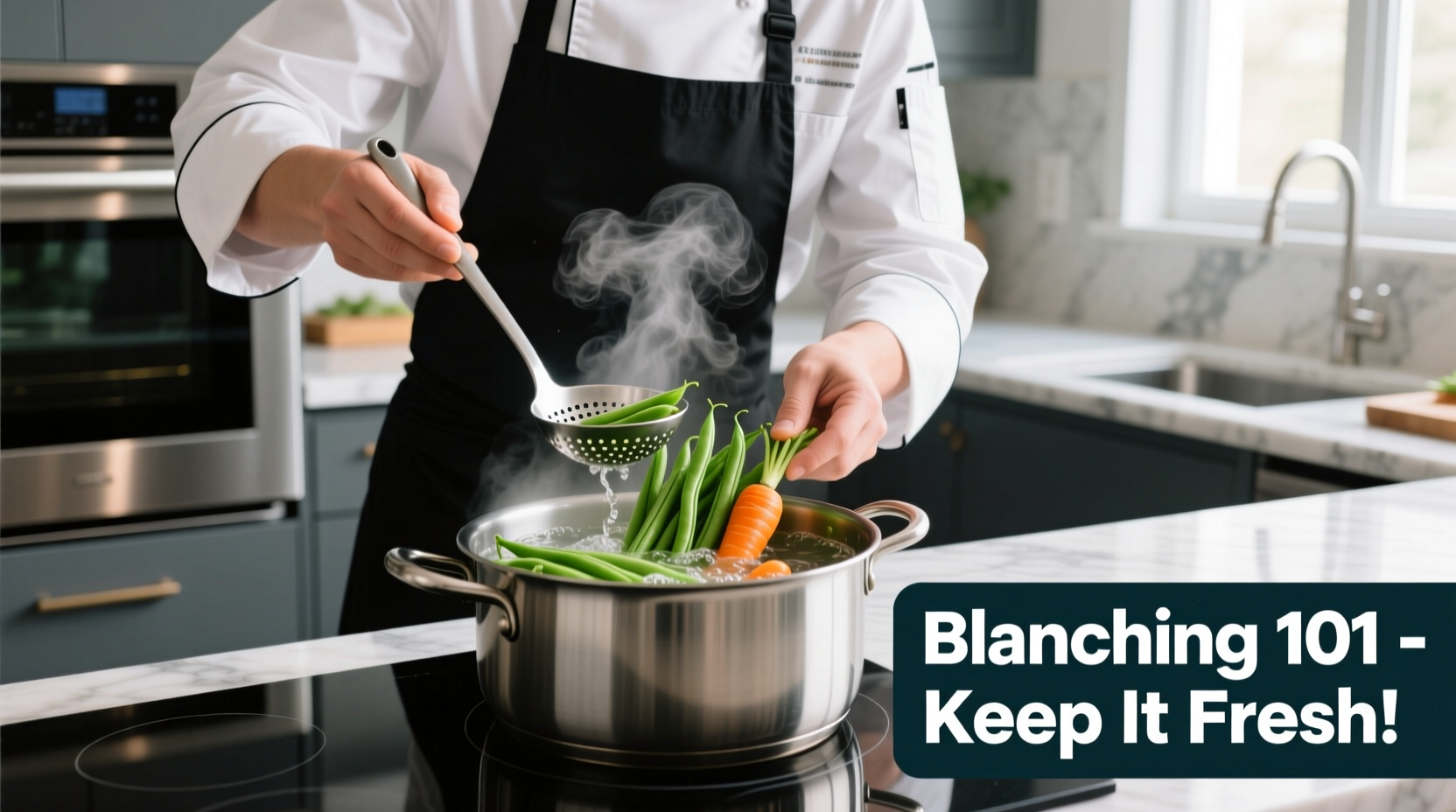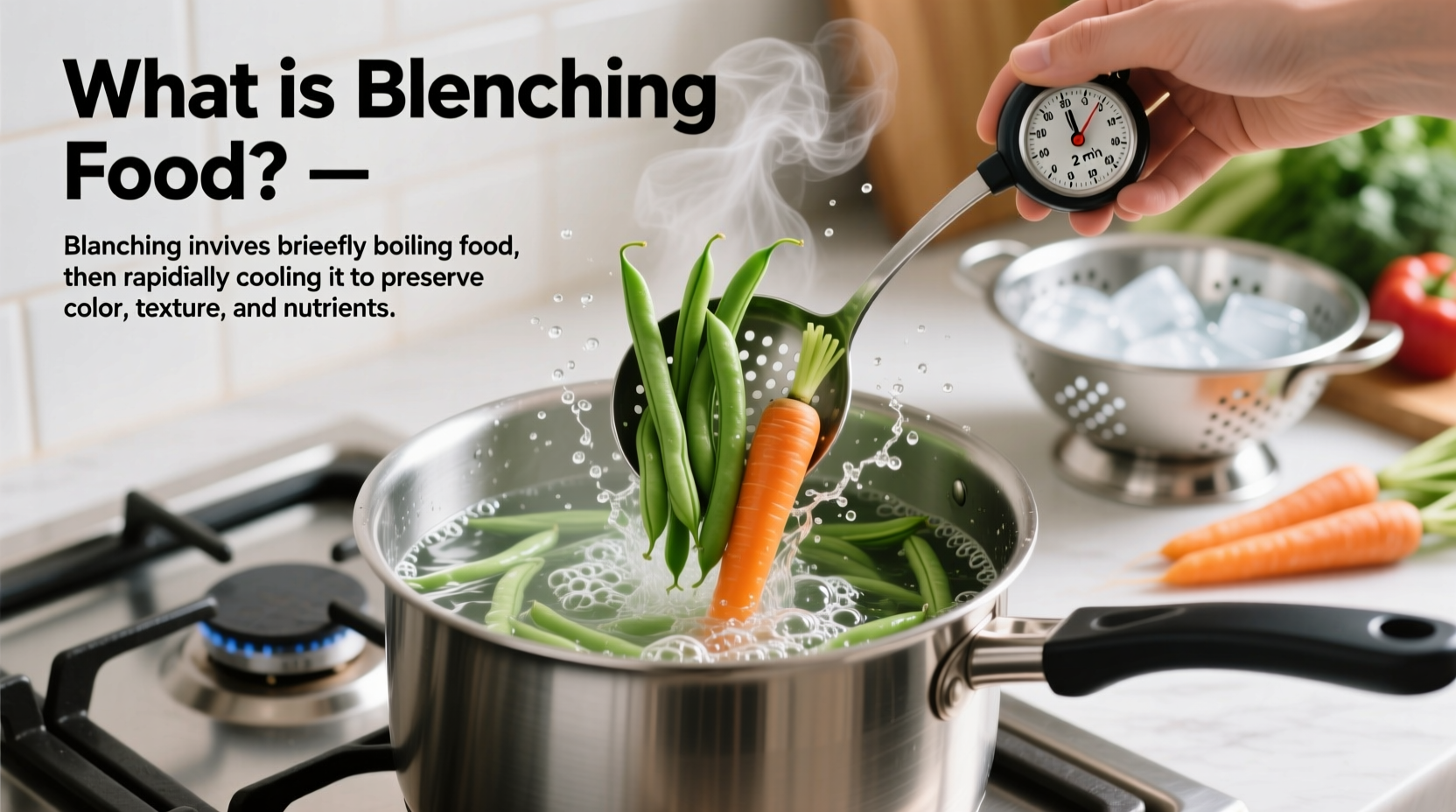Blanching food is a culinary technique where you briefly immerse vegetables, fruits, or nuts in boiling water followed by an immediate ice water bath to stop the cooking process. This simple two-step method preserves color, removes bitterness, eliminates surface bacteria, and prepares produce for freezing or further cooking—essential for maintaining texture and nutritional value in professional and home kitchens alike.
Ever wonder why restaurant vegetables look so vibrant and crisp compared to home-cooked ones? The secret often lies in proper blanching technique. This fundamental cooking method transforms ordinary produce into restaurant-quality ingredients while preserving nutrients that would otherwise be lost during extended cooking.
Why Chefs Rely on Blanching Daily
Professional kitchens use blanching as their first line of defense against flavor degradation. When vegetables like green beans or asparagus hit boiling water, enzymes that cause discoloration and texture breakdown become instantly inactive. According to the USDA's Food Safety and Inspection Service, blanching properly halts enzymatic activity that would otherwise ruin frozen produce within weeks.
"Blanching isn't just about appearance—it's food science in action," explains Antonio Rodriguez, chef and culinary instructor. "The brief heat exposure denatures proteins on the surface while the shock bath creates a protective barrier that locks in vitamins. Done correctly, you retain up to 90% of water-soluble vitamins compared to continuous boiling."
| Cooking Method | Vitamin C Retention | Color Preservation | Texture Outcome |
|---|---|---|---|
| Blanching + Shock | 85-90% | Excellent | Crisp-tender |
| Continuous Boiling | 40-60% | Poor | Mushy |
| Steaming | 70-80% | Good | Firm |
The Exact Blanching Process Chefs Use
Follow these precise steps for perfect results every time:
- Prepare ice bath: Fill large bowl with equal parts ice and water
- Boil generously salted water: Use 1-2 tablespoons salt per gallon
- Submerge produce: Add food in single layer (never overcrowd)
- Time precisely: 60-120 seconds for leafy greens, 2-4 minutes for dense vegetables
- Transfer immediately: Use slotted spoon to move to ice bath
- Shock completely: Wait until food reaches 40°F (typically 2-3 minutes)
- Dry thoroughly: Pat with clean towels before storing or cooking
The critical mistake home cooks make? Skipping the ice bath or leaving produce in too long. Cornell University's Food Science Department emphasizes that the shock phase must reduce internal temperature within 5 minutes to prevent residual cooking. "It's not optional—it's what makes blanching distinct from parboiling," Rodriguez notes.

When Blanching Becomes Essential
Certain ingredients absolutely require blanching for optimal results:
- Tomatoes: Slips skins effortlessly for sauces
- Almonds: Removes bitter skins for smooth nut milks
- Broccoli rabe: Eliminates intense bitterness
- Green beans: Preserves vibrant color for salads
- Fennel: Reduces overpowering licorice notes
However, blanching isn't universally beneficial. Delicate herbs like basil lose essential oils, while mushrooms develop unpleasant textures. The National Center for Home Food Preservation specifies that high-moisture vegetables like zucchini become waterlogged and should be frozen raw instead.
Avoid These 3 Costly Blanching Mistakes
Even experienced cooks sabotage their results with these common errors:
- Insufficient water volume: Too little water drops temperature too quickly, leading to uneven cooking. Use 1 gallon water per pound of produce.
- Overcrowding the pot: Adding too much food at once creates steaming instead of boiling. Process in small batches.
- Inconsistent timing: Different vegetables require precise durations. Under-blanching activates enzymes; over-blanching causes nutrient loss.
For perfect timing, follow this professional reference:
- Leafy greens (spinach, kale): 30-60 seconds
- Thin vegetables (green beans, asparagus): 90-120 seconds
- Dense vegetables (carrots, beets): 2-4 minutes
- Fruits (peaches, tomatoes): 30-45 seconds
Advanced Blanching Applications
Beyond basic preparation, chefs leverage blanching for specialized techniques:
- Double-blanching: For exceptionally crisp results in competition cooking
- Flavor infusion: Adding aromatics to blanching water for subtle seasoning
- Texture modification: Partially cooking dense vegetables before roasting
- Color enhancement: Adding lemon juice to water for brighter greens
When preparing meals in advance, blanched vegetables maintain quality for 3-5 days refrigerated or up to 12 months frozen. The key is thorough drying before storage—any surface moisture promotes ice crystals that damage cell structure during freezing.
Blanching vs. Parboiling: Critical Differences
Many confuse these techniques, but their purposes differ significantly:
- Blanching: Brief exposure to preserve quality (followed by shock)
- Parboiling: Partial cooking to reduce final cooking time (no shock)
"Parboiling aims to partially cook food, while blanching aims to preserve it," Rodriguez explains. "Blanching is about stopping the cooking process at its peak moment—that's why the ice bath isn't optional. Parboiling continues cooking later, so you want residual heat to keep working."











 浙公网安备
33010002000092号
浙公网安备
33010002000092号 浙B2-20120091-4
浙B2-20120091-4